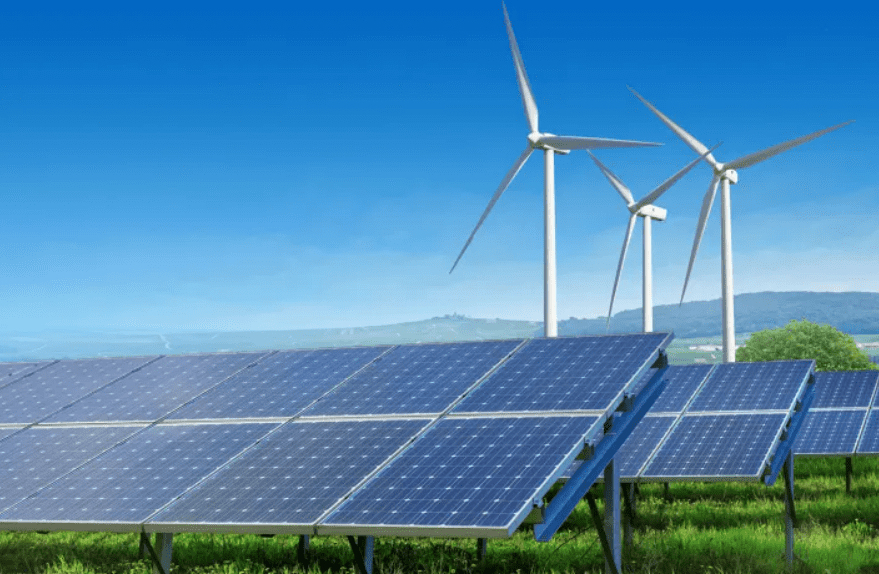Large-scale heat pumps are emerging as a transformative solution for sustainable heating in commercial buildings. By utilizing renewable energy sources, these systems significantly reduce carbon emissions and operational costs, making them an attractive alternative to traditional heating methods. Their increasing adoption reflects a broader commitment to environmental sustainability within the commercial sector.
What Are Large-Scale Heat Pumps?
Large-scale heat pumps are systems designed to transfer heat from one location to another, typically using renewable energy sources such as air, water, or ground heat. These systems can provide both heating and cooling for commercial buildings, making them versatile solutions for temperature regulation.
Chart: Types of Large-Scale Heat Pumps
| Type | Description | Typical Applications |
|---|---|---|
| Air Source Heat Pump | Extracts heat from outdoor air | Offices, retail spaces |
| Ground Source Heat Pump | Utilizes heat from the ground | Schools, hospitals |
| Water Source Heat Pump | Draws heat from nearby water bodies | Industrial facilities |
How Do Heat Pumps Work in Commercial Settings?
Heat pumps operate by transferring heat from a source (air, water, or ground) into a building. During winter, they extract heat from the outside environment and pump it indoors. In summer, the process reverses, providing cooling by removing heat from inside the building. This cycle is achieved through a refrigeration process involving refrigerants.
Why Are Heat Pumps Gaining Popularity for Heating Solutions?
Heat pumps are gaining popularity due to their energy efficiency and lower operational costs compared to traditional heating systems. They can produce up to four units of heat for every unit of electricity consumed, making them significantly more efficient than gas boilers. Additionally, as businesses seek to reduce their carbon footprints, heat pumps align well with sustainability goals.
What Are the Benefits of Using Heat Pumps in Commercial Buildings?
The benefits of using heat pumps include:
- Energy Efficiency: Substantial savings on energy bills due to high efficiency.
- Reduced Carbon Emissions: Lower greenhouse gas emissions compared to fossil fuel-based systems.
- Versatility: Ability to provide both heating and cooling.
- Low Maintenance: Generally require less maintenance than traditional boilers.
What Types of Heat Pumps Are Commonly Used in Commercial Buildings?
Common types of heat pumps used in commercial buildings include:
- Air Source Heat Pumps (ASHP): Extract heat from ambient air.
- Ground Source Heat Pumps (GSHP): Utilize geothermal energy from the ground.
- Water Source Heat Pumps (WSHP): Draw heat from nearby water bodies.
Chart: Comparison of Common Heat Pump Types
| Type | Efficiency (COP) | Installation Cost | Typical Use Cases |
|---|---|---|---|
| Air Source | 3 – 4 | Moderate | Offices, retail |
| Ground Source | 4 – 5 | High | Schools, large facilities |
| Water Source | 3 – 4 | Moderate | Industrial applications |
How Do Heat Pumps Compare to Traditional Heating Systems?
Heat pumps outperform traditional heating systems such as gas boilers and electric heaters by providing higher efficiency and lower operational costs. While traditional systems often have efficiencies around 80%-90%, heat pumps can achieve efficiencies exceeding 400% under optimal conditions.
Why Is Energy Efficiency Important for Businesses?
Energy efficiency is crucial for businesses as it directly impacts operational costs and sustainability efforts. By reducing energy consumption through efficient heating solutions like heat pumps, companies can lower their utility bills while minimizing their environmental impact, which is increasingly important to consumers and stakeholders.
What Challenges Do Businesses Face When Implementing Heat Pumps?
Challenges include:
- High Initial Costs: The upfront investment for purchasing and installing heat pumps can be significant.
- Space Requirements: Sufficient space is needed for installation, especially for ground source systems.
- Retrofitting Issues: Older buildings may require upgrades to insulation or heating distribution systems to maximize efficiency.
What Innovations Are Emerging in Heat Pump Design?
Emerging innovations include:
- Smart Technology Integration: Advanced controls that optimize performance based on real-time data.
- Hybrid Systems: Combining heat pumps with traditional systems for enhanced efficiency during peak demand.
- Improved Refrigerants: Development of low-global-warming-potential refrigerants that enhance environmental compatibility.
How Can Heat Pumps Contribute to Carbon Neutrality Goals?
Heat pumps contribute to carbon neutrality by providing a low-emission alternative to fossil fuel-based heating systems. By integrating renewable energy sources into their operation—such as solar or wind power—heat pumps can significantly reduce overall carbon emissions associated with building heating.
Why Is Integration with Renewable Energy Sources Beneficial?
Integrating heat pumps with renewable energy sources enhances overall system efficiency and sustainability. This combination allows buildings to utilize free energy while reducing reliance on grid electricity derived from fossil fuels, further lowering carbon footprints and operating costs.
What Is the Future Outlook for Large-Scale Heat Pump Adoption?
The future outlook for large-scale heat pump adoption is positive, driven by increasing regulatory support for decarbonization and rising energy costs. As technology advances and costs decrease, more commercial buildings are expected to adopt heat pump systems as part of their sustainability strategies.
Latest News
Recent developments indicate a growing trend towards large-scale heat pump installations in commercial buildings as businesses seek sustainable heating solutions. With advancements in technology enhancing efficiency and reducing costs, many organizations are transitioning away from traditional heating methods towards more environmentally friendly options.
Editor Comment
“The rise of large-scale heat pumps signifies a pivotal shift towards sustainable heating solutions in commercial buildings. As we face increasing pressures to reduce carbon emissions, these technologies not only offer efficiency but also align with global decarbonization goals.”



